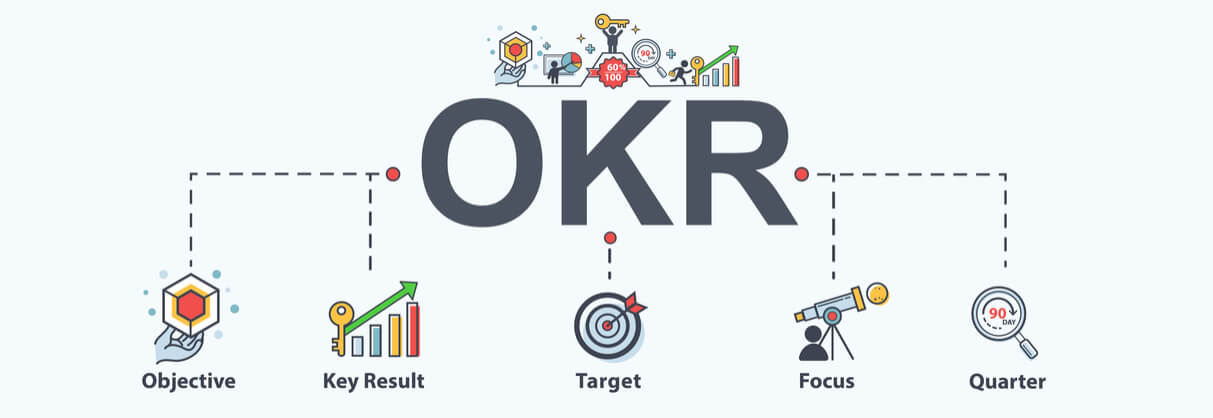OKR’s – what are they and how can they help your organisation?
“There are so many people working so hard and achieving so little.”
“Nothing moves us forward like a deadline.”
The world of work is changing and we’re all under more pressure than ever to deliver results. Unfortunately, during times of struggle our natural response as humans is to invest more of our precious time, as we seem to believe that the longer we work at something, the higher the chances are of success. The reality is that you can work as many hours as you like but if you’re not focusing in the right areas, you’ll just transition to failure much quicker!
Today’s blog looks to introduce you to the concept of OKR’s (Objectives and Key Results). Some of you may have come across OKR’s in the past and for others it will be a brand new concept. I’m going to focus on OKR’s in a business context but this can also be applied to individuals.
What is an OKR?
Objectives and Key Results (OKR’s) have been around since the 1950’s and stem from Peter Drucker’s Management By Objectives (MBO) theory. Hungarian born business man Andrew Grove then evolved MBO’s into OKR’s as we know them today. During Andrew’s time at Silicon Valle based, Technology giant, Intel, he embedded OKR’s as part of the business strategy. After being part of Intel’s OKR journey, John Doerr then took the OKR baton and introduced the concept at Google, which was game changing.
So there’s a bit of context behind where OKR’s came from but you’re still probably thinking what actually is an OKR?
OKR’s have 3 key elements, as described below:
Objective – your end goal. What are you trying to achieve? What is the end result? For example, you want to generate £30,000 in one quarter.
Key Results – series of smaller milestones you’ll aim to hit along the journey. Key results must be measurable and come in the form of a metric. For example if your objective is to generate £30,000 in one quarter. You can then say that one of your key results must be to generate at least £10,000 per month. OR if you have a conversion ratio of 50% and an average sale price of £5,000 then you know you need to have £60,000 worth of pipeline business that could close in the 3 month period in order to hit your objective.
If it does not have a number, it is not a key result!
Initiatives – Initiatives are the more micro level outputs that we typically measure in our businesses. For example, using the £30,000 objective and various key results, you could assume that the initiatives to get to this level would be meetings, calls, emails, mail shots, events etc.
OKR’s – Annually, Quarterly or Monthly?
As with most things it depends on the context and situation but best practise suggests that you should set OKR’s on a quarterly basis. Some may argue that a 90 day period is too short however, when you consider that OKR’s are there to support the ultimate vision of the organisation or over arching goal, then they can be seen as short and effective sprints to achieve success.
Benefits of OKR’s
- Create a culture of accountability
- Ensure that from the top to the bottom of the organisation, everyone is clear on what needs to be achieved
- The short time frame creates a level of urgency
- OKR’s help bring company visions to life
- Means that businesses shift from outputs to outcomes
Limitations
- For many businesses this will be a large culture shift as the success of OKR’s focus on what you’re trying to achieve rather than how you’re going to achieve it.
- It can be tricky finding exactly what to focus on – if you get it wrong then you just accelerate your speed to failure
- 90 day springs are not a long time and require a committed, engaged and high performing leadership team in order to be successful
Should you have any questions in regards to OKR’s or wish to learn more then please contact the team on [email protected] or contact our team by clicking here.
Matt Wilden
Founder & Managing Director
Rencai Group






